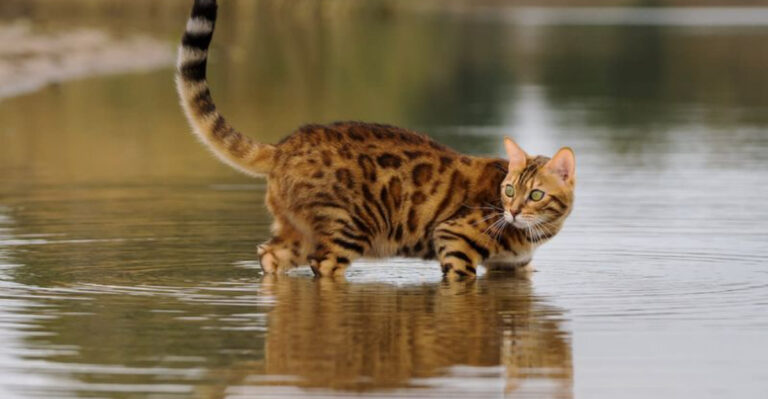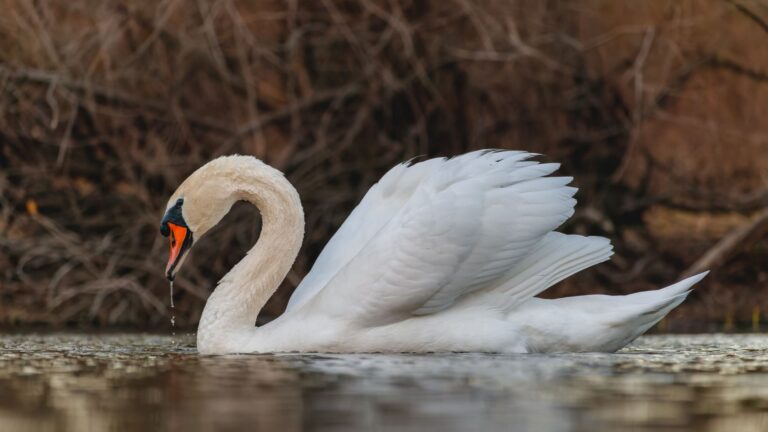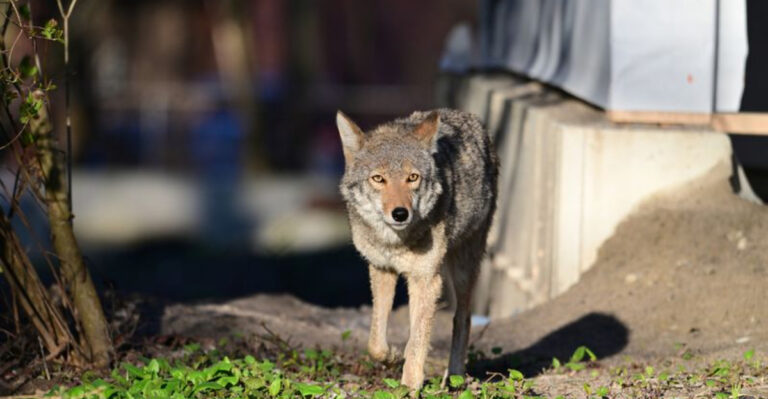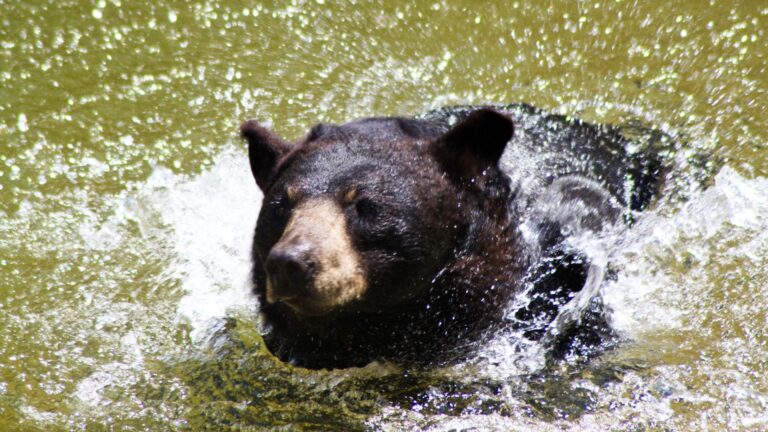7 Tricks To Make Birds Flock To Your Birdbath (And 7 Rookie Mistakes To Avoid)
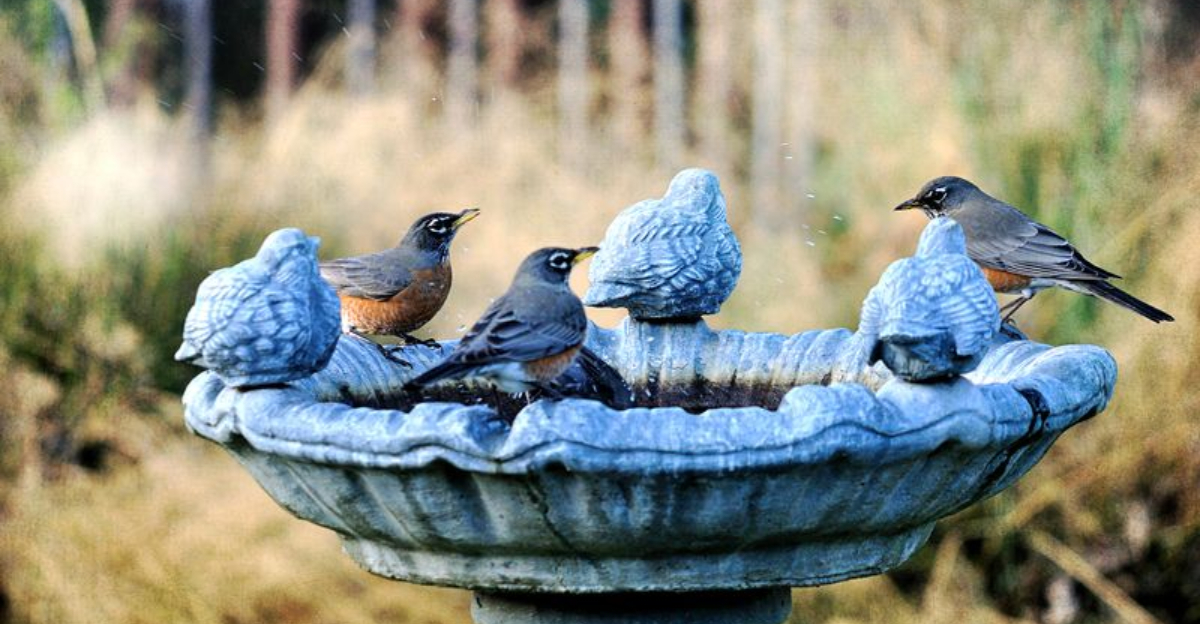
Turning your backyard into a bird-watching paradise starts with a simple birdbath. These feathered visitors need fresh water not just for drinking, but for keeping their feathers clean and healthy.
With a few simple tweaks to your birdbath setup, you can transform it from an occasional pit stop to the hottest bird hangout in the neighborhood.
1. Keep Water Fresh Daily
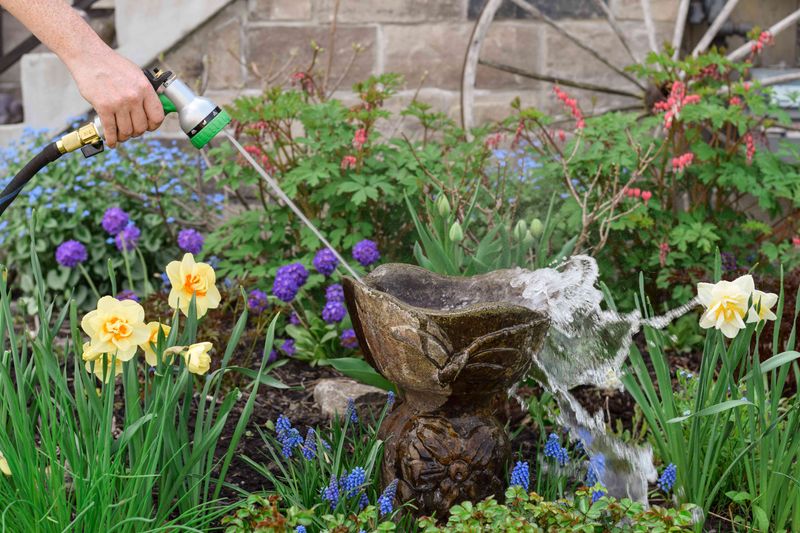
Nothing drives birds away faster than stale, dirty water. Fresh water attracts feathered visitors like a magnet, while stagnant pools become breeding grounds for mosquitoes and harmful bacteria.
Simply emptying and refilling your birdbath each morning takes just seconds but makes all the difference. During summer heat waves, consider refreshing the water twice daily – your winged guests will thank you with increased visits!
2. Create Moving Water Effects
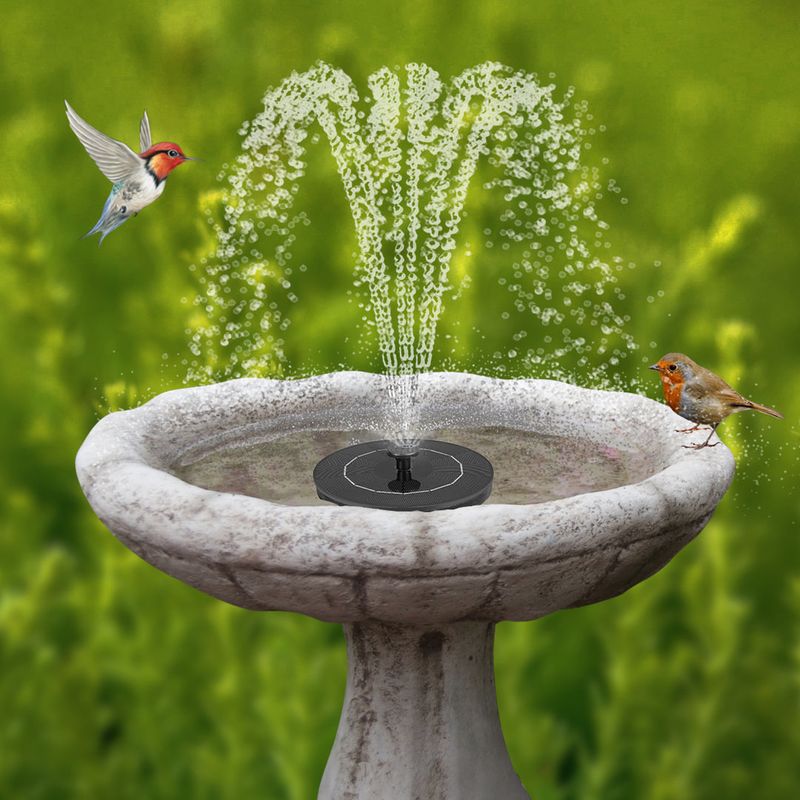
Birds can spot moving water from remarkable distances – it’s like a flashing neon sign saying “Drink here!” The gentle sound and sparkling movement trigger their natural instincts to investigate.
Adding a small solar fountain, dripper, or water wiggler creates that irresistible ripple effect. These affordable gadgets not only attract more birds but also prevent mosquitoes from laying eggs in your birdbath, solving two problems at once.
3. Maintain Shallow Water Depths
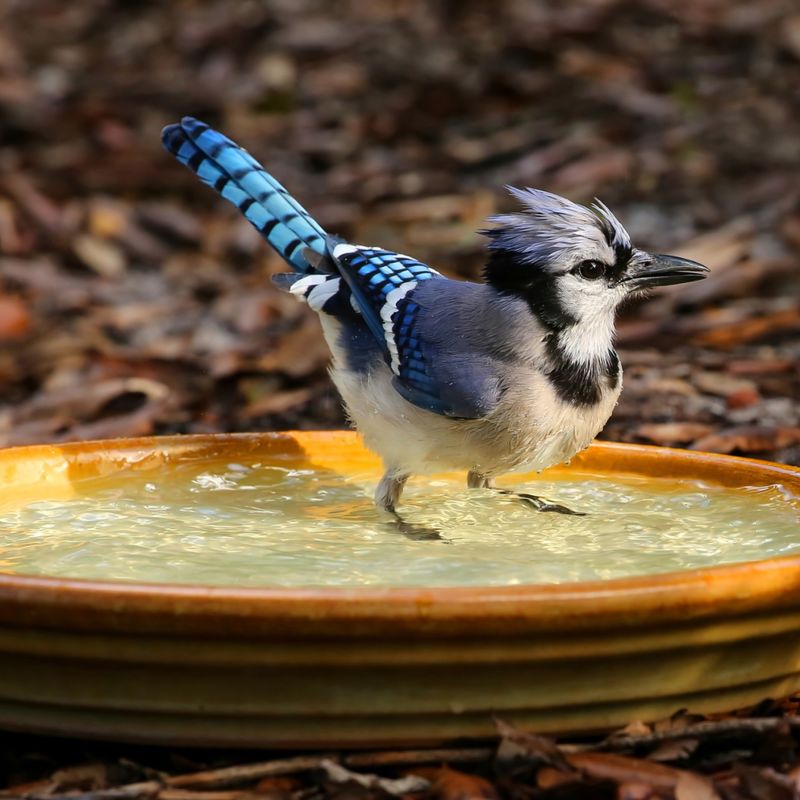
Most songbirds prefer wading, not swimming. They’re looking for puddle-like conditions where they can stand comfortably while bathing. Deep water scares away the visitors you’re trying to attract!
The sweet spot? About 1-2 inches at the deepest point, with a gradual slope to even shallower edges. Consider adding clean pebbles or stones to one side to create an easy-access ramp that lets even tiny birds enjoy a safe splash.
4. Position Near Protective Cover
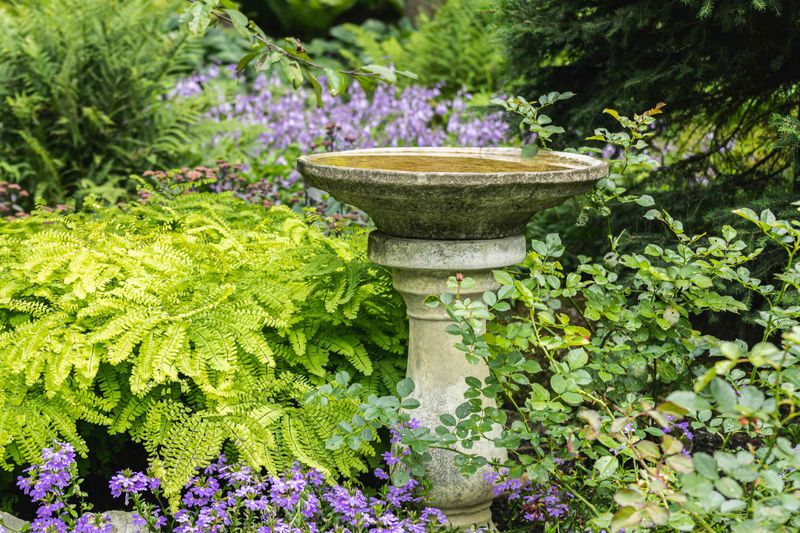
Birds feel vulnerable while bathing – wet feathers make quick escapes difficult. Smart placement near bushes or trees provides a quick retreat if predators appear.
The ideal setup? Place your birdbath about 10-15 feet from dense shrubs or low tree branches. This gives birds confidence to linger longer at your water feature. They’ll appreciate having a safe perch nearby where they can preen and dry off after bathing.
5. Choose Textured, Non-Slip Surfaces
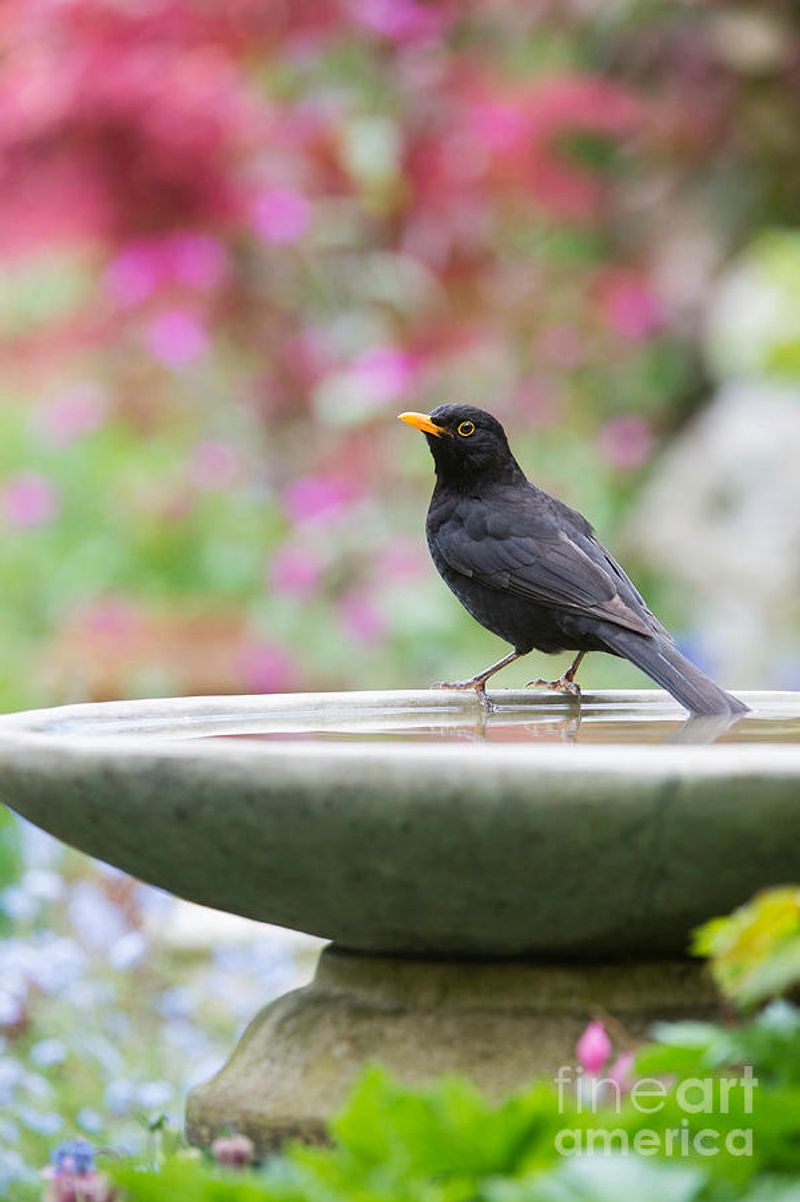
Slippery surfaces spell disaster for birds. Those tiny feet need reliable traction, especially when wet feathers already make balance tricky.
Rough-textured concrete, stone with natural ridges, or ceramic baths with a slightly grainy finish provide the perfect grip. If your existing bath is too slick, adding a thin layer of small pebbles or even a rubberized bath mat cut to size creates instant bird-friendly footing.
6. Add Eye-Catching Perches
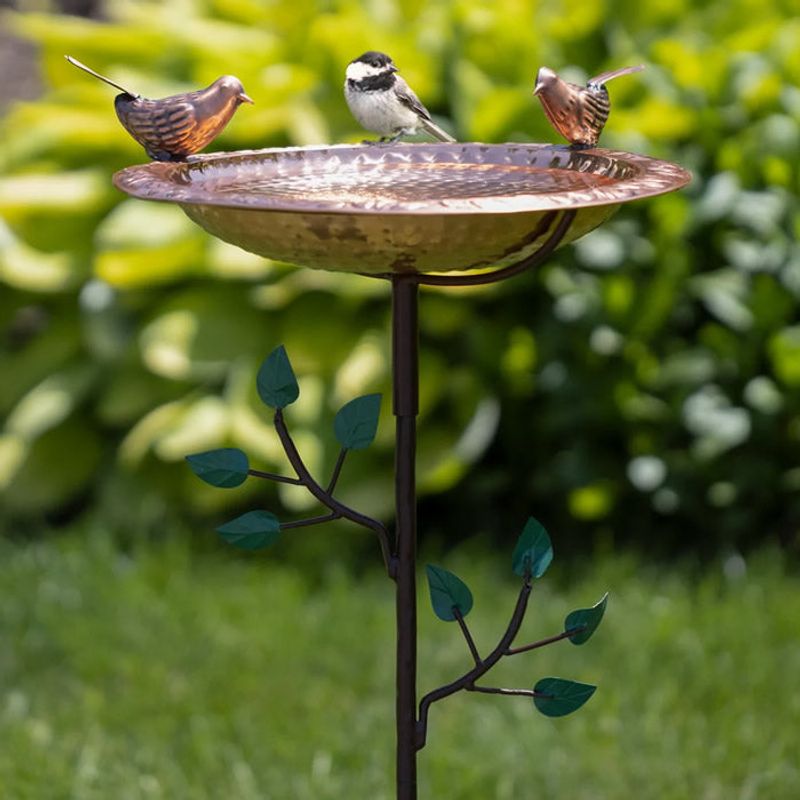
Before diving in, birds like to survey the scene. A strategic perch near your birdbath serves as both landing pad and lookout point.
Try positioning decorative branches, shepherd’s hooks, or even native plants around your bath. These perches let birds rest, scope out potential dangers, and take turns at the water. As a bonus, watching their social interactions from these perches adds another fascinating dimension to your bird-watching experience.
7. Create Multi-Level Bathing Stations
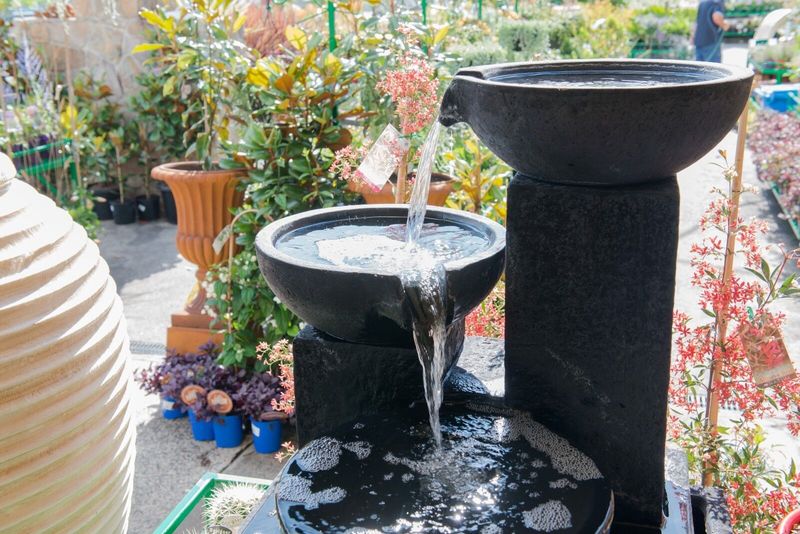
Different bird species have different bathing preferences. Some prefer deep splashing, while others just want to dip their toes.
Consider creating a bathing complex with varying depths and styles. A traditional pedestal bath paired with a shallow ground-level dish nearby caters to diverse bird populations. Ground-feeding species like mourning doves particularly appreciate lower baths, while robins might dominate your pedestal version.
8. Placing In Direct Sunlight
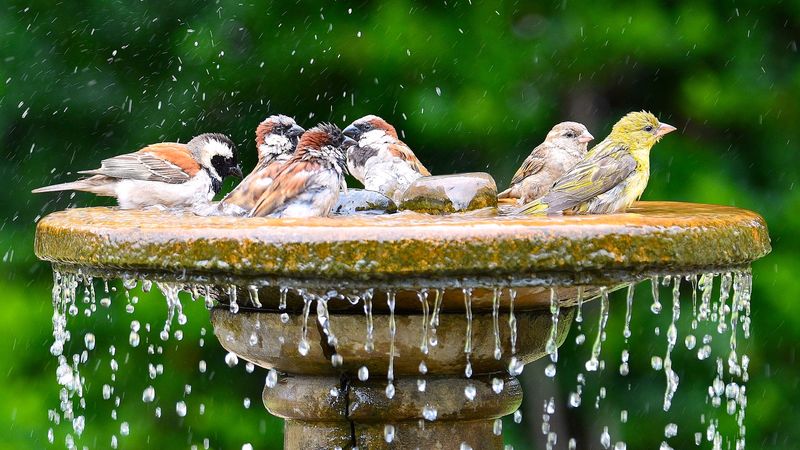
That sunny spot might seem perfect, but it’s actually a bird-repelling mistake! Excessive sunlight rapidly heats water to uncomfortable temperatures and accelerates algae growth.
Instead, aim for dappled shade or morning sun with afternoon protection. This natural temperature control keeps water inviting throughout the day. As a bonus, partially shaded baths stay cleaner longer and require less maintenance – a win for both you and your feathered visitors.
9. Using Deep, Steep-Sided Containers
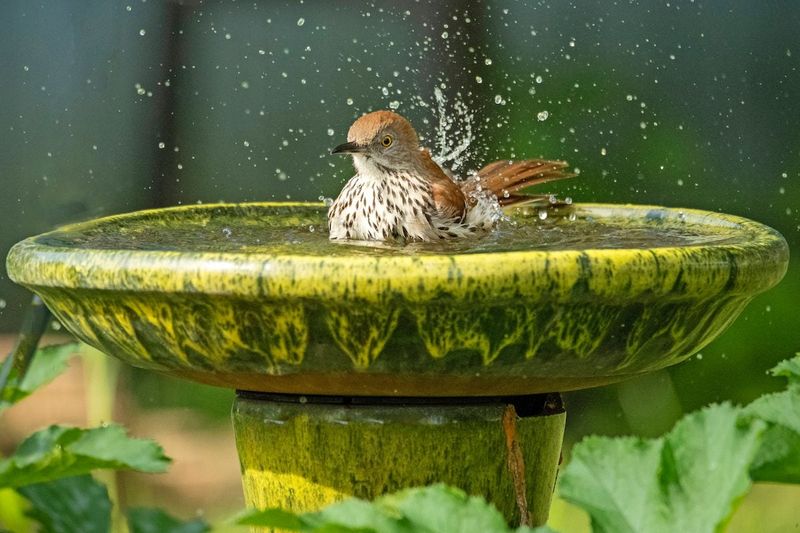
That beautiful deep bowl might look elegant to human eyes, but birds see a drowning hazard. Most songbirds avoid water deeper than their legs!
Many decorative birdbaths fail because they’re simply too deep or have slippery vertical sides. Birds need gradual slopes and shallow areas to feel secure. If you love your deep bath, modify it by adding stones or a smaller inverted dish inside to create safe, shallow bathing zones.
10. Neglecting Regular Cleaning
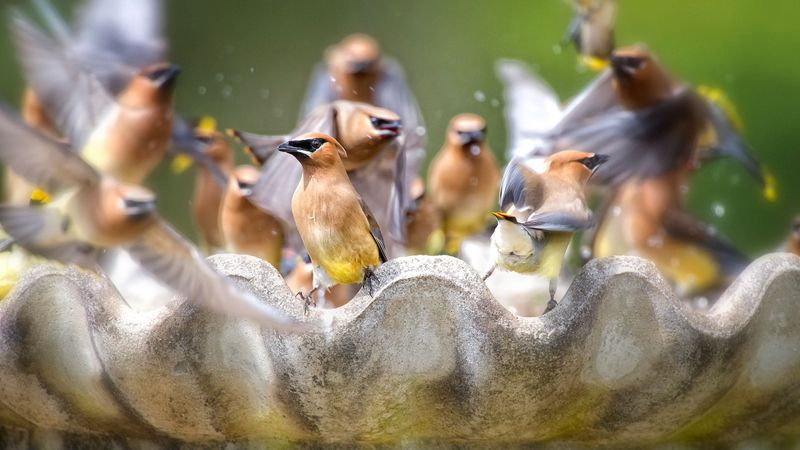
That grimy film isn’t just unsightly – it’s actively dangerous to birds. Harmful bacteria, fungal diseases, and parasites thrive in neglected birdbaths, potentially spreading illness throughout your local bird population.
A quick scrub with a stiff brush every few days prevents biofilm buildup. For deeper cleaning, a simple solution of nine parts water to one part vinegar works wonders without introducing harmful chemicals that could hurt your feathered friends.
11. Using Chemical Cleaners Or Additives
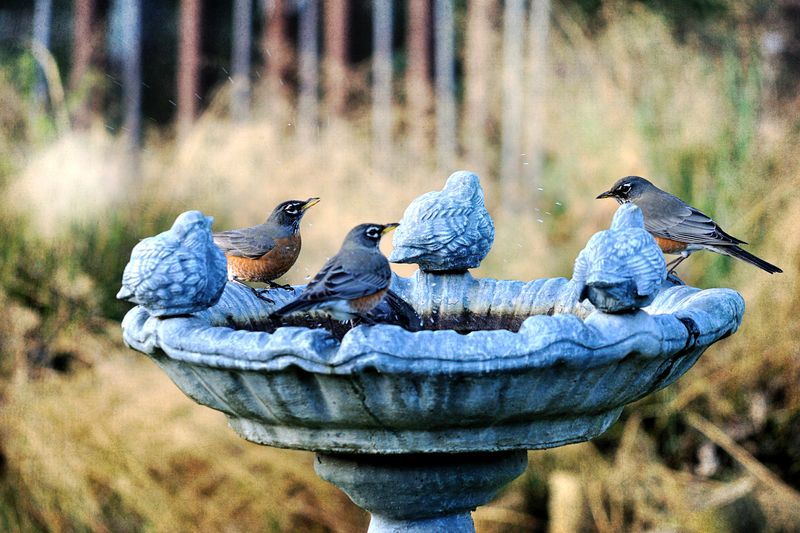
Those blue water clarifiers and bleach solutions might keep water looking pristine, but they’re poison to birds. Even small chemical residues can damage delicate feathers and internal organs when birds preen after bathing.
Stick to elbow grease and mild, bird-safe cleaning methods. If algae proves stubborn, empty the bath completely and let it dry in direct sunlight for a day – UV rays naturally disinfect without harmful residues.
12. Forgetting Winter Water Access
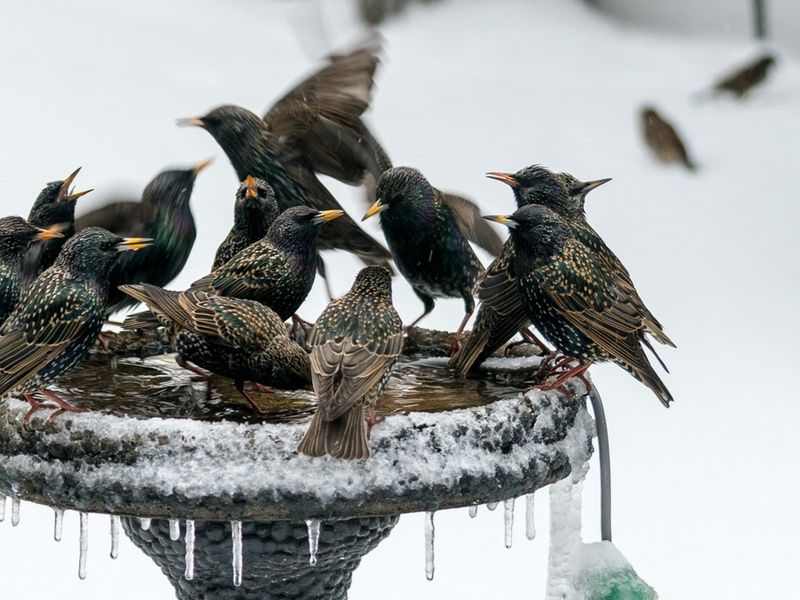
When everything freezes, birds struggle most to find drinking water – not food! Many bird enthusiasts mistakenly pack away their baths during winter months, exactly when birds need water access most.
Heated birdbaths or simple floating de-icers keep water available during freezes. Even on the coldest days, you’ll be amazed how many grateful visitors appear for a drink. Just remember to position winter baths in sunny, wind-protected spots to maximize their effectiveness.
13. Positioning Too Close To Feeders
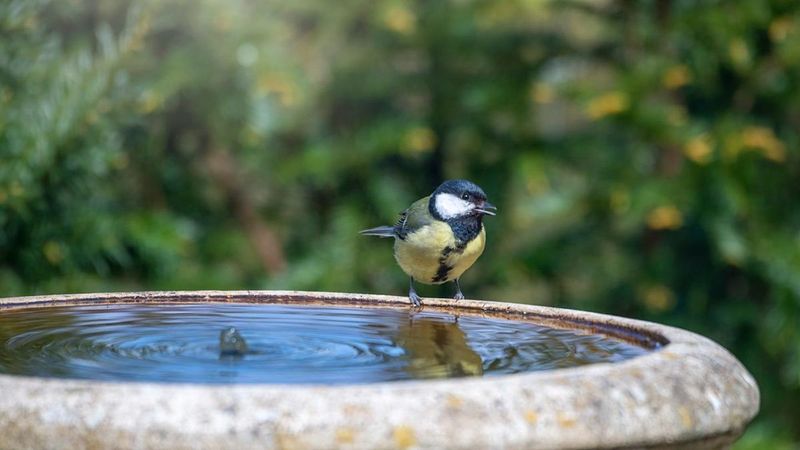
Seed husks, droppings, and food debris quickly contaminate water when baths sit directly under feeders. This creates unhygienic conditions that smart birds avoid.
Keep your bath and feeding stations separated by at least 10 feet. This separation prevents food-seeking birds from accidentally soiling the water while allowing both features to remain in view from your favorite watching spot. The bonus? You’ll create different activity zones in your yard, attracting more diverse species.
14. Ignoring Predator Protection
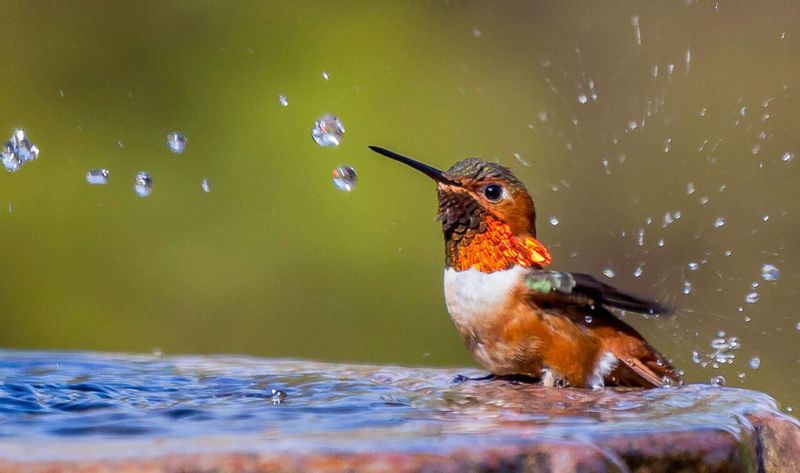
That open, exposed birdbath might give you perfect viewing, but it makes birds feel like sitting ducks for neighborhood cats and hawks.
Smart placement includes nearby escape routes and partial overhead protection. Consider installing a simple predator guard – like a wire dome that allows birds in but keeps cats out. Motion-activated sprinklers can also deter prowling predators while keeping your bath area fresh.

